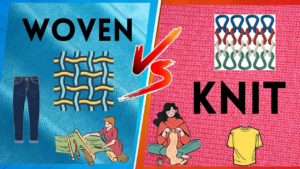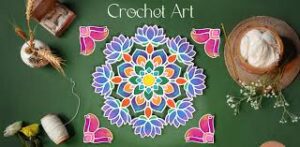
Introduction
Crochet tip for designing your own knitting or crochet patterns and customizing projects to suit personal preferences is an exciting way to express your creativity and make your craft truly unique. Whether you’re a seasoned crafter or just starting, learning how to design patterns and customize projects opens up endless possibilities for creating one-of-a-kind items that reflect your style and meet your specific needs.
This comprehensive guide will walk you through the process of designing unique patterns and customizing your knitting or crochet projects. We’ll cover everything from gathering inspiration and sketching designs to selecting the right materials and perfecting your technique. By the end of this blog, you’ll have the knowledge and confidence to create original pieces that stand out.
Crochet Tip
1. Gathering Inspiration and Developing Ideas

Finding Inspiration for Your Designs
Inspiration can come from many places, and finding the right sources can spark creativity:
- Nature: Look at the patterns, textures, and colors found in nature. The shapes of leaves, flowers, and landscapes can provide unique ideas for your designs.
- Art and Architecture: Study different art styles, paintings, and architectural designs. The geometric shapes and intricate details can be translated into your patterns.
- Fashion Trends: Keep an eye on current fashion trends. Take note of popular colors, textures, and styles, then incorporate these elements into your designs.
- Cultural Elements: Explore traditional patterns and motifs from various cultures. These can add a rich, historical dimension to your creations.
- Personal Interests: Draw inspiration from your hobbies, favorite books, movies, or music. This will add a personal touch to your patterns and make them truly unique.
Brainstorming and Sketching
Once you’ve gathered inspiration, start brainstorming and sketching your ideas:
- Mood Boards: Create a mood board with images, colors, and textures that resonate with your concept. This visual reference will guide your design process.
- Sketches: Sketch your ideas on paper. Don’t worry about perfection at this stage—focus on getting your concepts down.
- Digital Tools: Use digital design tools like Adobe Illustrator or free alternatives like GIMP to create more precise patterns and experiment with colors and shapes.
Translating Ideas into Patterns
Transforming your ideas into actual patterns is the next step:
- Repetition and Symmetry: Consider how you can use repetition and symmetry to create a balanced and pleasing pattern. This could be through repeating shapes, lines, or motifs.
- Scale and Proportion: Play with scale and proportion to make your pattern more dynamic. Larger elements can serve as focal points, while smaller details add intricacy.
- Color Schemes: Choose a color scheme that complements your design. You might opt for monochromatic shades, complementary colors, or a bold mix of contrasting hues.
2. Understanding Basic Pattern Structures

Knitting Pattern Basics
Understanding the structure of knitting patterns is essential for creating your designs:
- Stitch Patterns: Familiarize yourself with basic stitch patterns such as stockinette, garter stitch, ribbing, and cables. These building blocks can be combined to create intricate designs.
- Gauge: Gauge is the number of stitches and rows per inch in your fabric. It’s crucial for ensuring your finished project matches the desired size. Make swatches in different stitches and yarns to determine the gauge for your design.
- Charting: Use graph paper or digital charting tools to map out your pattern. Charting helps visualize complex designs and ensures accuracy in your instructions.
Crochet Pattern Basics
Similarly, understanding crochet pattern structures is key for customization:
- Stitch Types: Master basic crochet stitches like single crochet, double crochet, treble crochet, and slip stitches. These are the foundation of your designs.
- Shaping Techniques: Learn how to increase and decrease stitches to shape your projects. This is crucial for creating items like garments, toys, and accessories.
- Pattern Repeats: Many crochet patterns involve repeating a series of stitches. Practice reading and writing these repeats to ensure clarity in your designs.
Combining Techniques
Combining knitting and crochet techniques can add variety and interest to your projects:
- Mixing Textures: Combine knitting and crochet in the same project to create contrasting textures. For example, use knitting for the main body of a garment and crochet for the edging or embellishments.
- Layering Patterns: Layer different stitch patterns on top of each other. For example, a knitted cable pattern can be overlaid with a crocheted lace motif.
3. Customizing Existing Patterns

Adapting Patterns to Fit Your Style
Customizing existing patterns is a great way to make them your own:
- Modifying Size: Adjust the size of a pattern to fit your measurements. For knitting, this might involve changing the gauge or adding/removing stitches. For crochet, you might need to adjust the stitch count or row length.
- Changing Colors: Experiment with different color combinations to match your style. You can also incorporate techniques like color blocking, stripes, or ombre effects.
- Adding Personal Details: Add personal touches to a pattern, such as embroidery, appliqué, or unique buttons. These small details can make a big difference in the overall look.
Altering Stitch Patterns
If you’re comfortable with the basics, you can alter the stitch patterns within an existing design:
- Swapping Stitches: Replace a basic stitch pattern with a more complex one. For example, substitute stockinette stitch with a lace pattern or cables.
- Incorporating Textures: Add texture by incorporating bobbles, popcorn stitches, or cables into a flat design. This adds dimension and visual interest.
- Custom Borders and Edgings: Customize the edges of your project with unique borders or trims. You can crochet a scalloped edge or knit a picot hem.
Adjusting Fit and Proportions
Making adjustments to the fit and proportions of a pattern ensures it meets your specific needs:
- Lengthening or Shortening: Modify the length of a sweater, scarf, or blanket to better suit your preferences. This may involve adding or removing rows or adjusting stitch counts.
- Shaping Adjustments: Change the shaping of a garment for a better fit. For example, add waist shaping, change the sleeve length, or modify the neckline.
- Custom Sizing: Create custom sizes by adjusting the stitch count and gauge. This is especially useful for making items like gloves, socks, or hats.
4. Developing Advanced Design Skills

Creating Complex Patterns
As you become more confident, you can experiment with creating complex, multi-layered patterns:
- Advanced Stitch Techniques: Learn advanced techniques such as brioche knitting, Tunisian crochet, or fair isle. These can be used to create intricate, eye-catching designs.
- Pattern Combinations: Combine multiple stitch patterns within a single project. For example, mix lace panels with cables or combine different colorwork techniques.
- Three-Dimensional Design: Explore three-dimensional design elements, such as textured motifs, sculptural shapes, or layered patterns.
Designing Garments and Accessories
Garments and accessories require careful planning and design considerations:
- Garment Construction: Understand the basic construction methods for garments, such as top-down or bottom-up knitting and seaming techniques. This knowledge will help you create well-fitting, comfortable clothing.
- Pattern Grading: If you’re designing garments, you’ll need to grade your patterns to fit different sizes. This involves adjusting stitch counts, shaping, and proportions for each size.
- Accessory Design: When designing accessories like hats, gloves, or bags, consider functionality as well as aesthetics. Think about factors like ease of use, durability, and practicality.
Experimenting with Materials and Tools
Experimenting with different materials and tools can lead to innovative designs:
- Unconventional Yarns: Try using unconventional yarns, such as ribbon, wire, or recycled materials. These can add unique textures and effects to your projects.
- Specialty Tools: Explore the use of specialty tools like knitting looms, crochet hooks with ergonomic handles, or circular needles. These tools can offer new possibilities for your designs.
- Mixed Media: Combine knitting or crochet with other crafts, such as weaving, felting, or beading. This can result in truly unique, mixed-media creations.
5. Writing and Sharing Your Patterns
Writing Clear and Concise Instructions
When designing your patterns, writing clear instructions is essential for sharing your work with others:
- Step-by-Step Instructions: Break down your pattern into clear, step-by-step instructions. Use simple language and be precise with stitch counts, measurements, and techniques.
- Pattern Charts: Include charts or diagrams to supplement your written instructions. Visual aids can help knitters and crocheters understand complex patterns more easily.
- Abbreviations and Glossaries: Provide a list of abbreviations and a glossary of terms used in your pattern. This ensures that your pattern is accessible to crafters of all skill levels.
Testing Your Patterns
Testing your patterns is crucial to ensure they’re accurate and easy to follow:
- Pattern Testing Groups: Join online pattern testing groups or forums where experienced crafters can test your designs. They’ll provide feedback on clarity, accuracy, and ease of use.
- Self-Testing: Create multiple samples of your design to test for consistency. This will help you identify any errors or areas that need improvement.
- Feedback Integration: Use the feedback from testers to refine your pattern. Make any necessary adjustments and clarify any confusing instructions.
Sharing and Selling Your Patterns
Once your pattern is complete, you can share or sell it online:
- PDF Downloads: Create PDF versions of your pattern for easy distribution. Include high-quality photos, detailed instructions, and any necessary charts or diagrams.
- Etsy and Ravelry: Sell your patterns on popular platforms like Etsy or Ravelry. These sites have large communities of crafters looking for unique, original patterns.
- Social Media and Blogging: Use social media and blogging to promote your patterns. Share your design process, finished projects, and tips for customizing your patterns.
Conclusion
Designing unique patterns and customizing projects to suit personal preferences is a rewarding and creative process. By gathering inspiration, understanding basic pattern structures, and experimenting with advanced techniques, you can create one-of-a-kind pieces that reflect your style and skill level. Whether you’re designing for yourself or sharing your patterns with others, the possibilities are endless.
With practice and patience, you can elevate your craft to new heights and enjoy the satisfaction of creating something truly unique. So, grab your needles, hooks, and yarn, and start designing your next masterpiece today!
Related Article
4 Traditional Techniques, Easy Styles: Crochet Patterns





Pingback: How to Fix Common Knitting Mistakes: 10 Common Knitting Mistakes